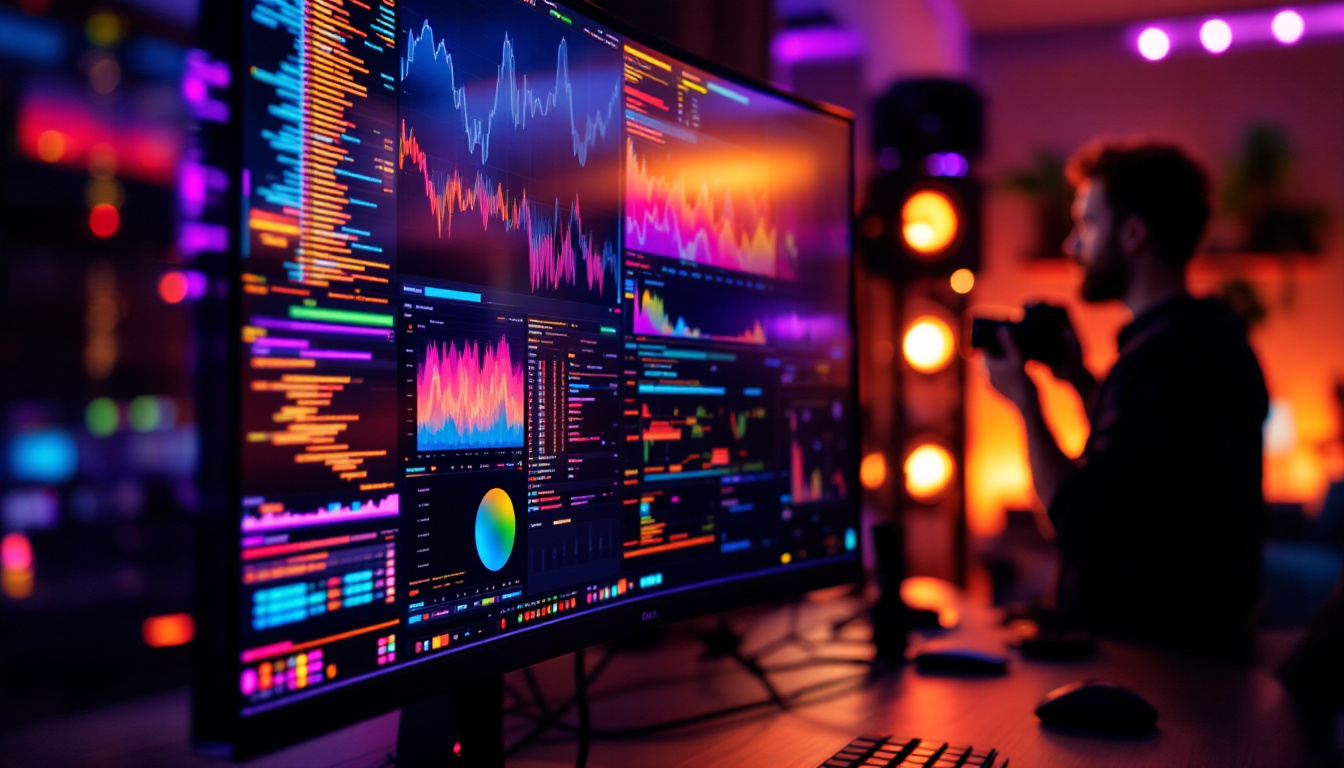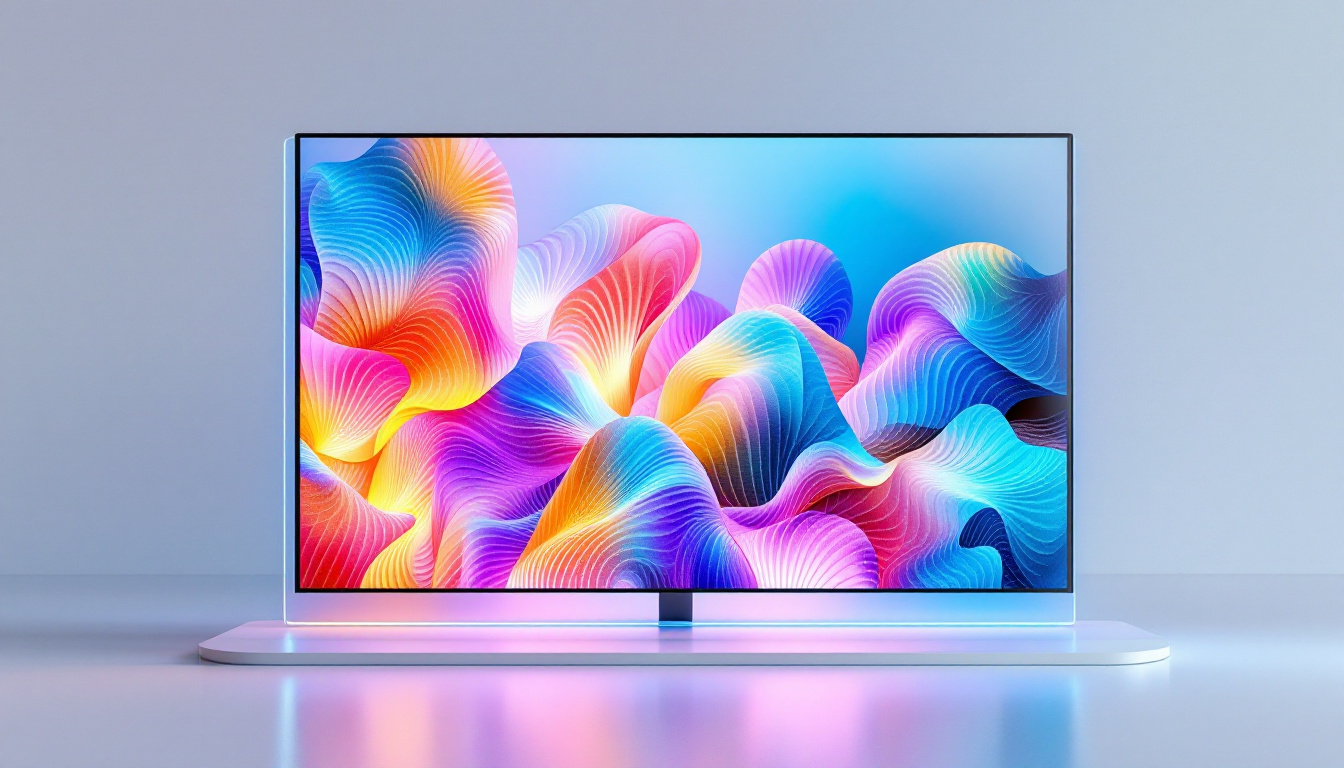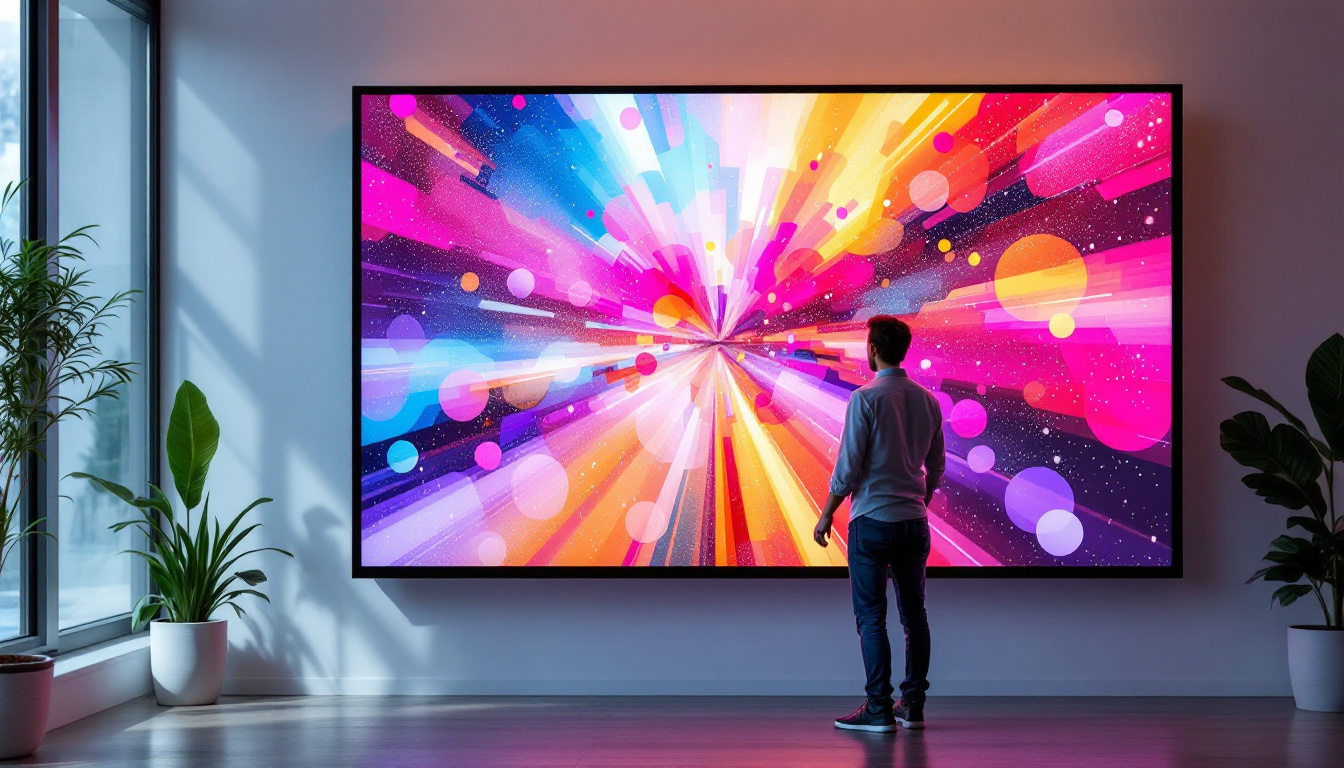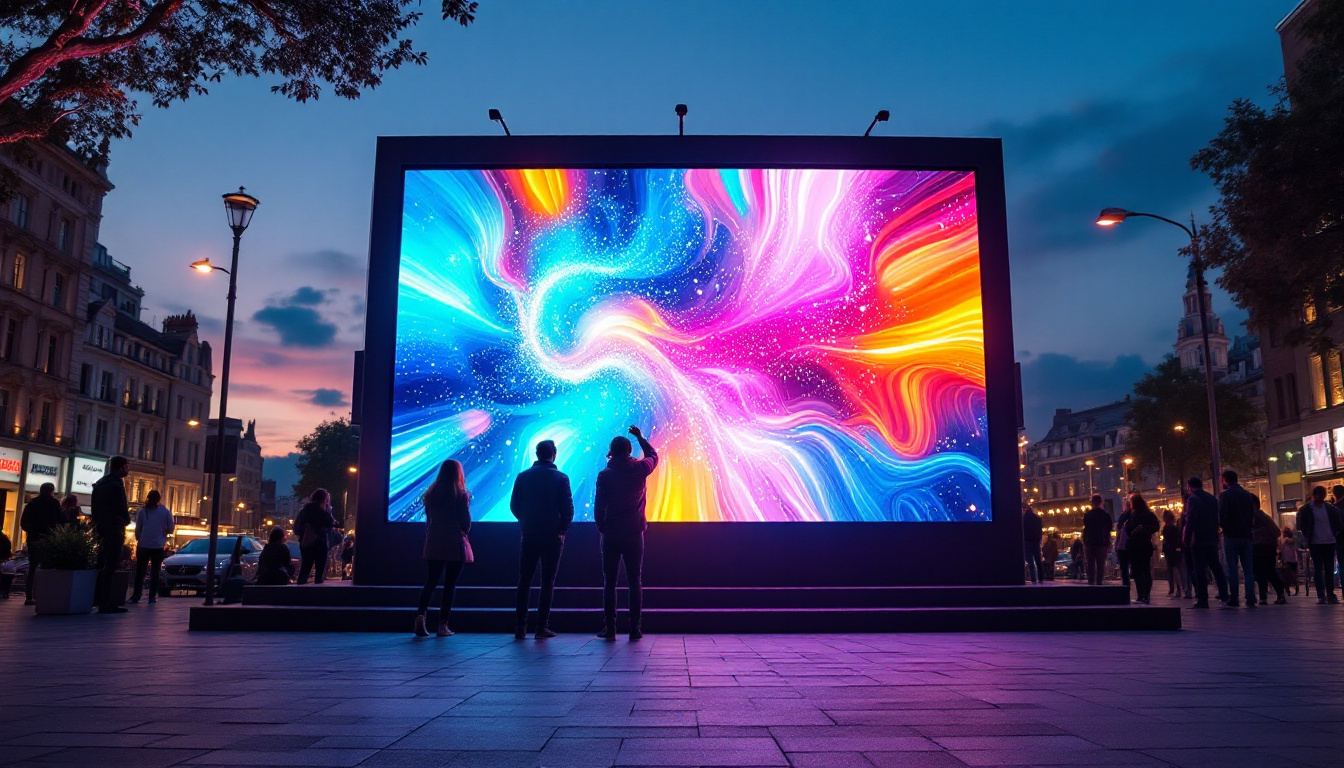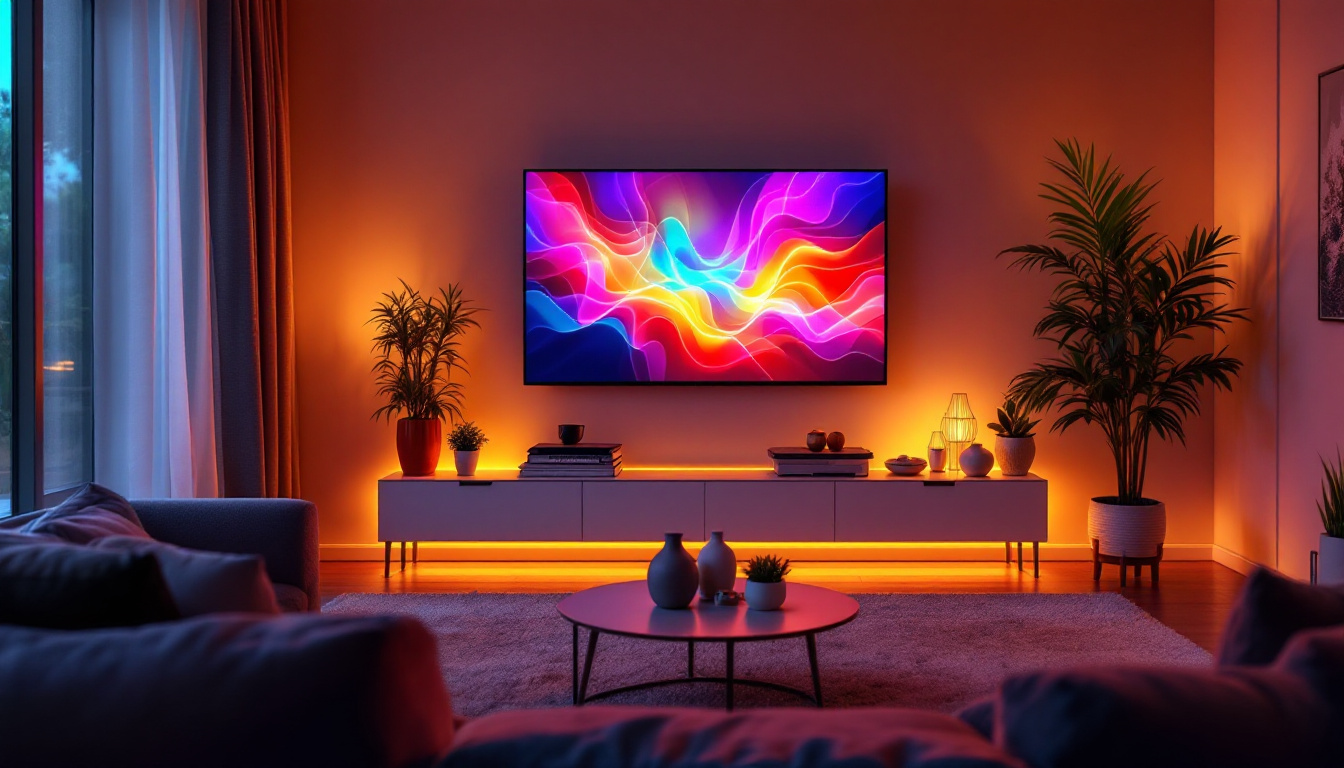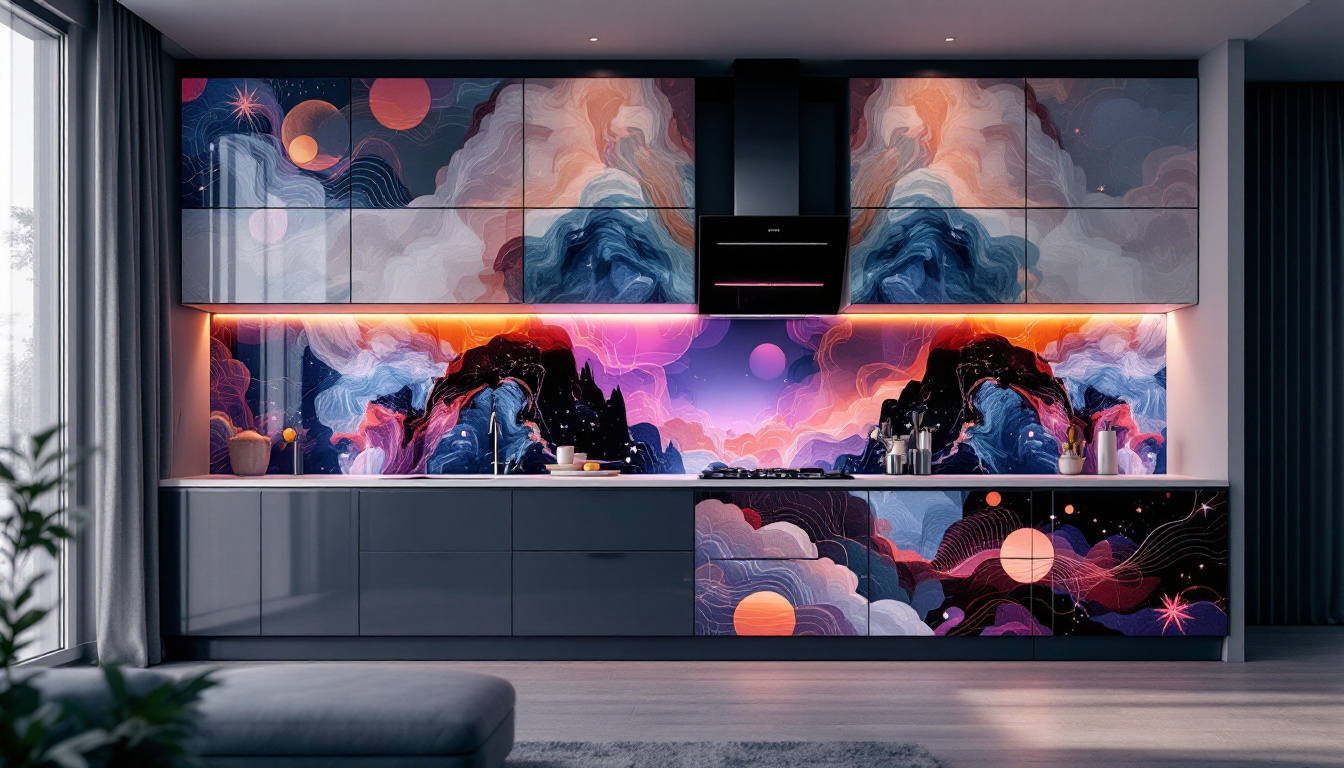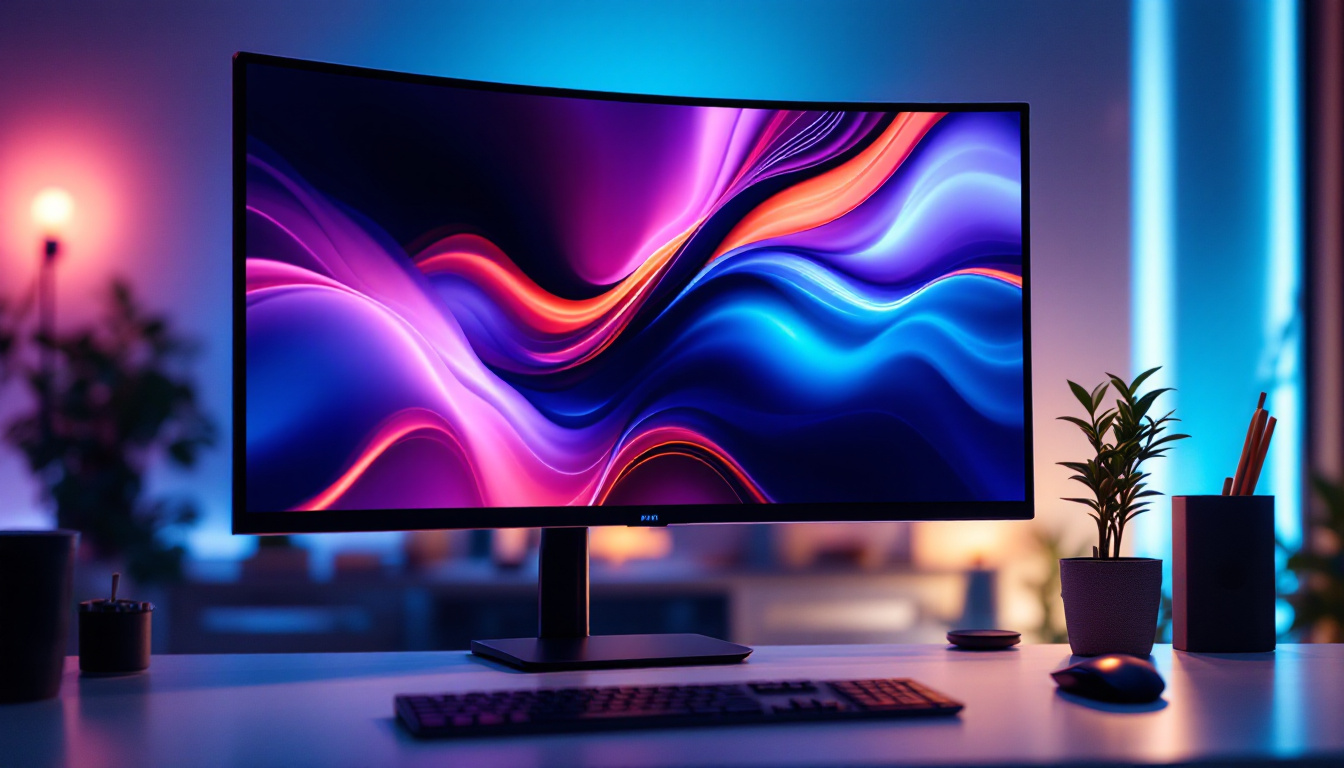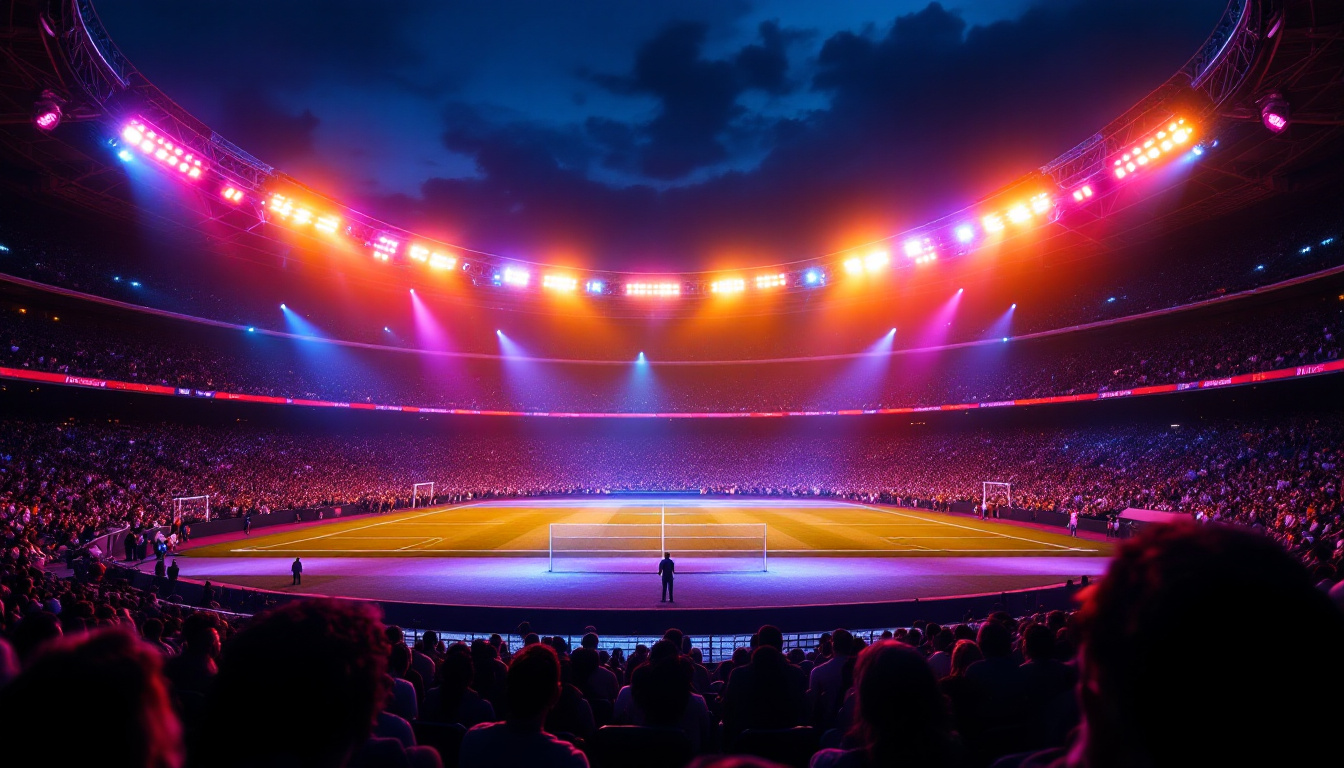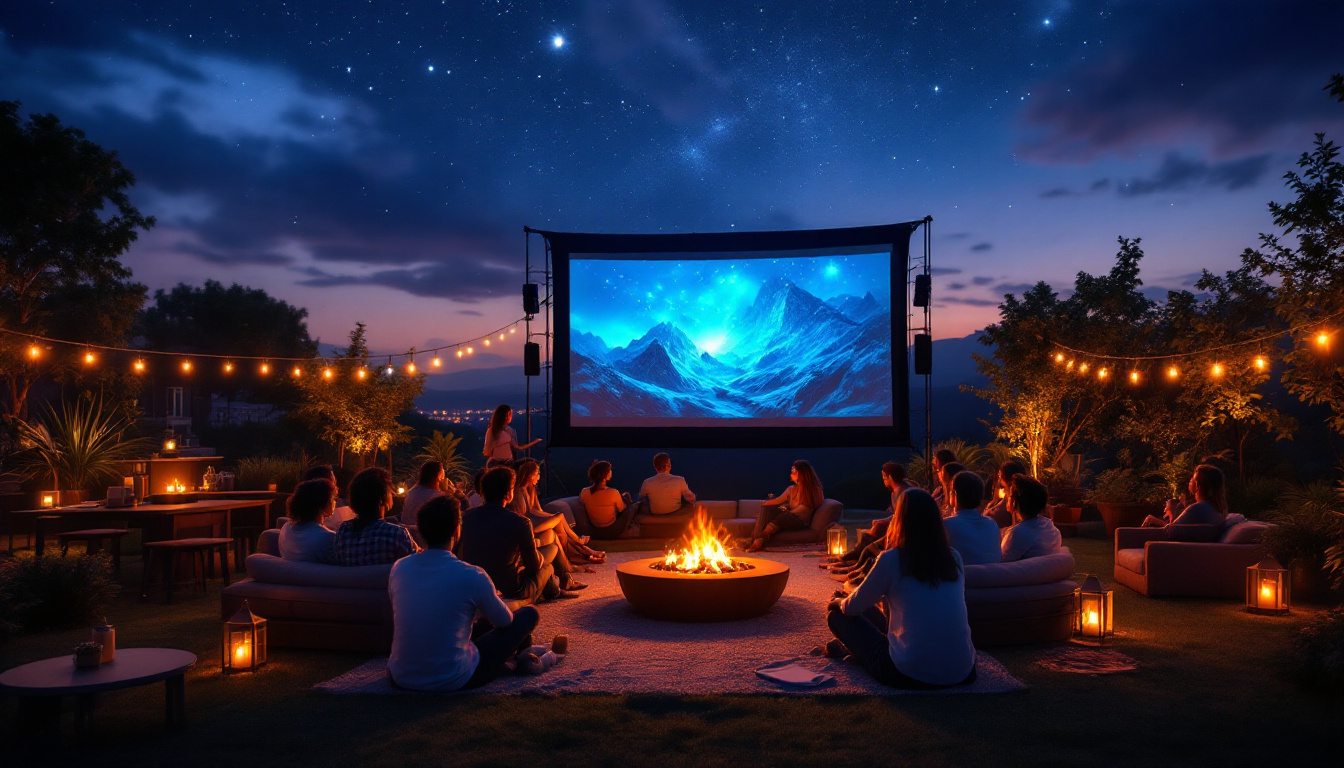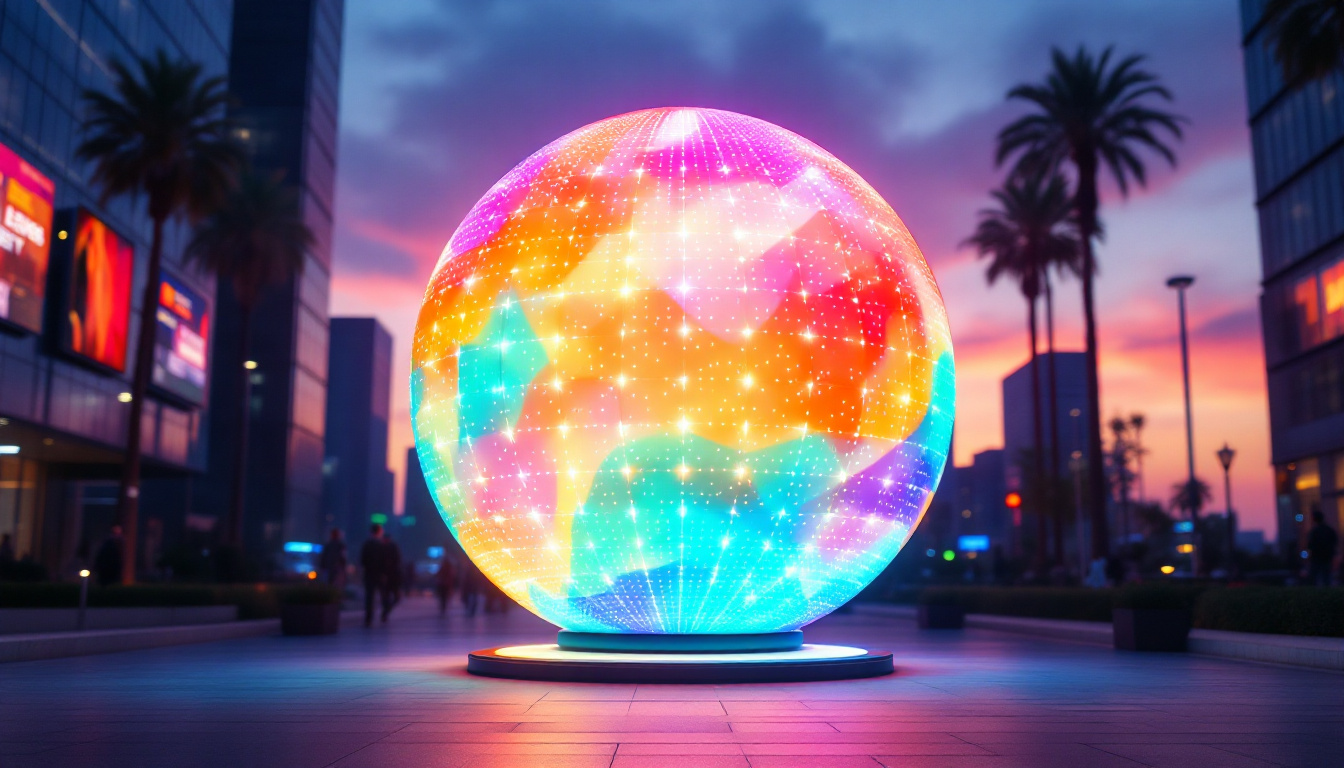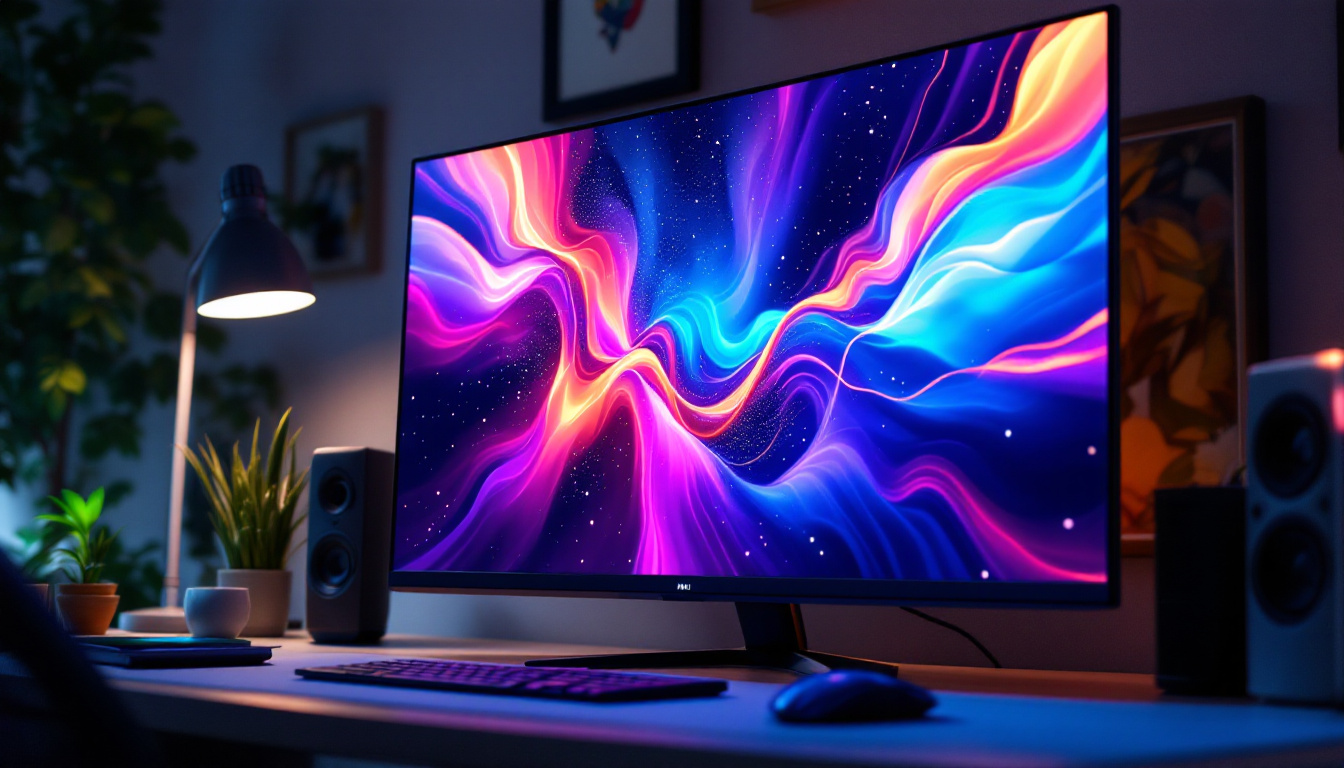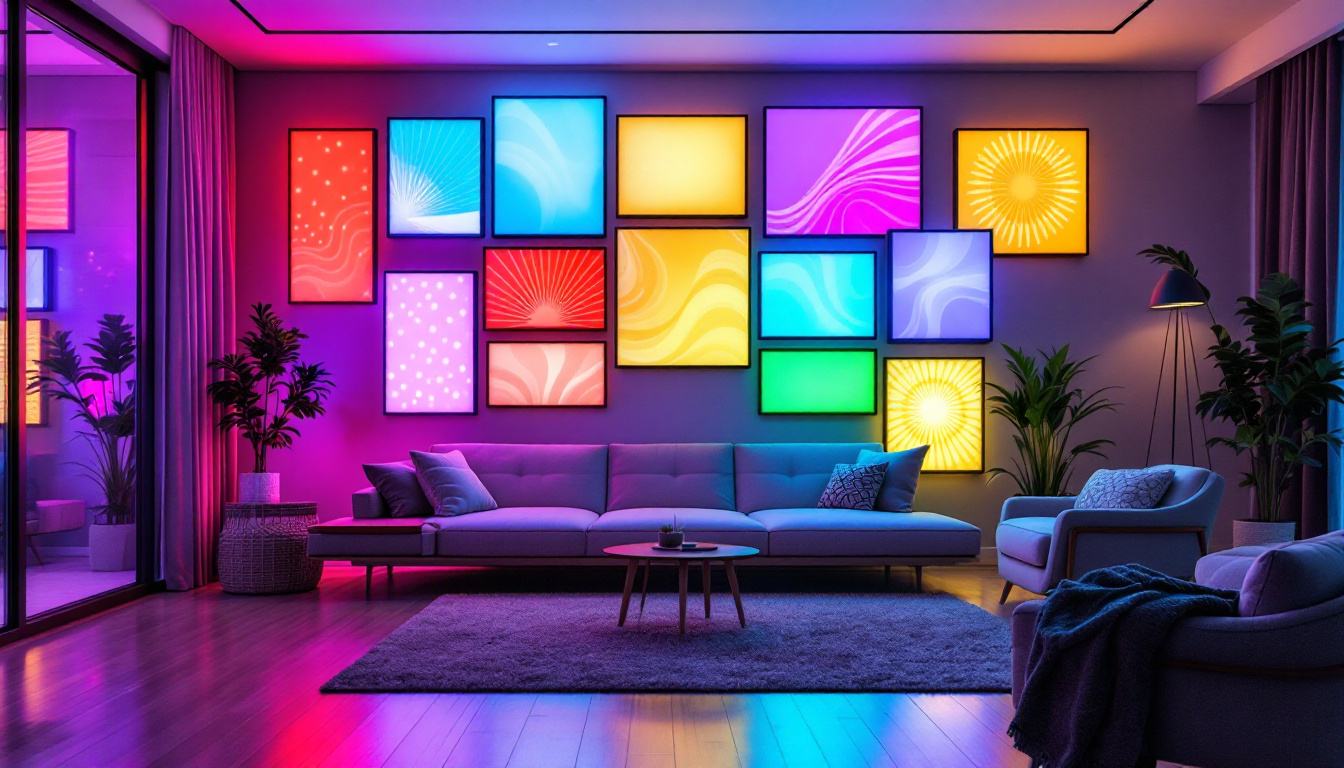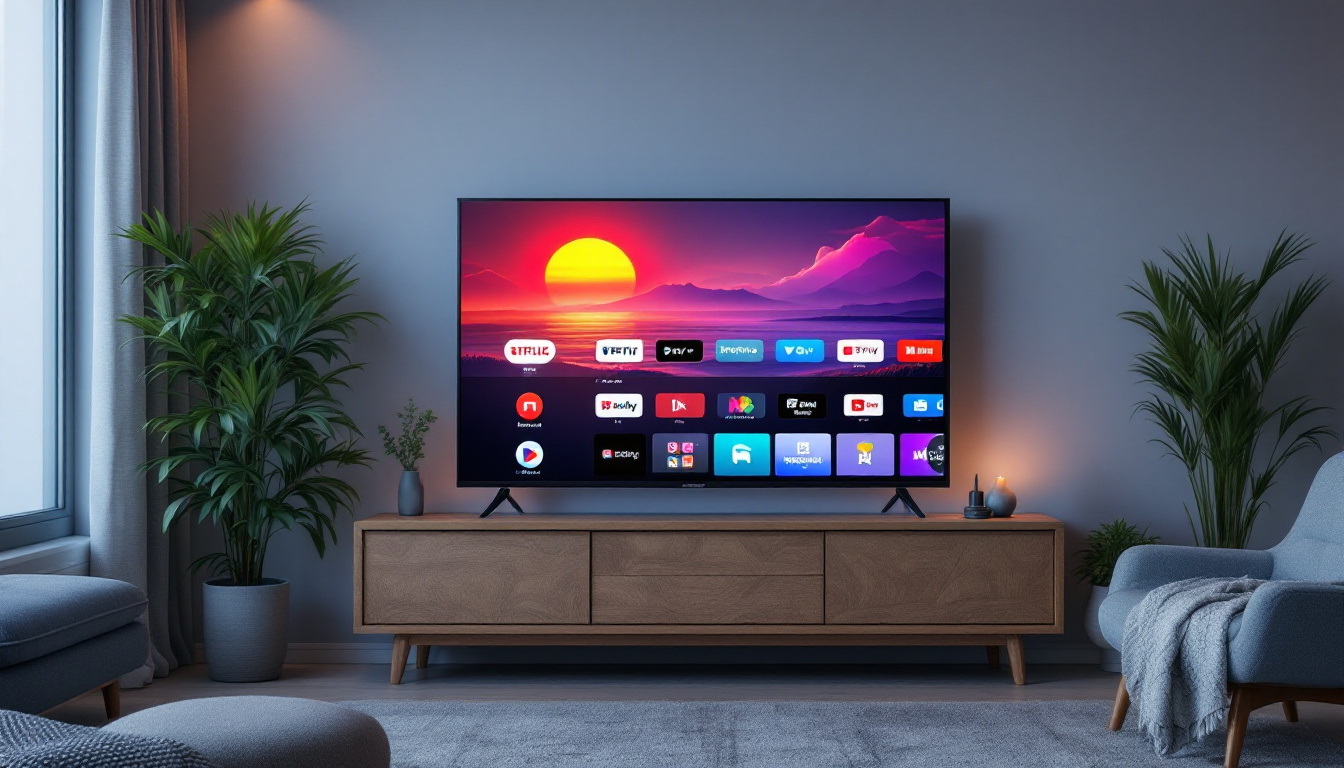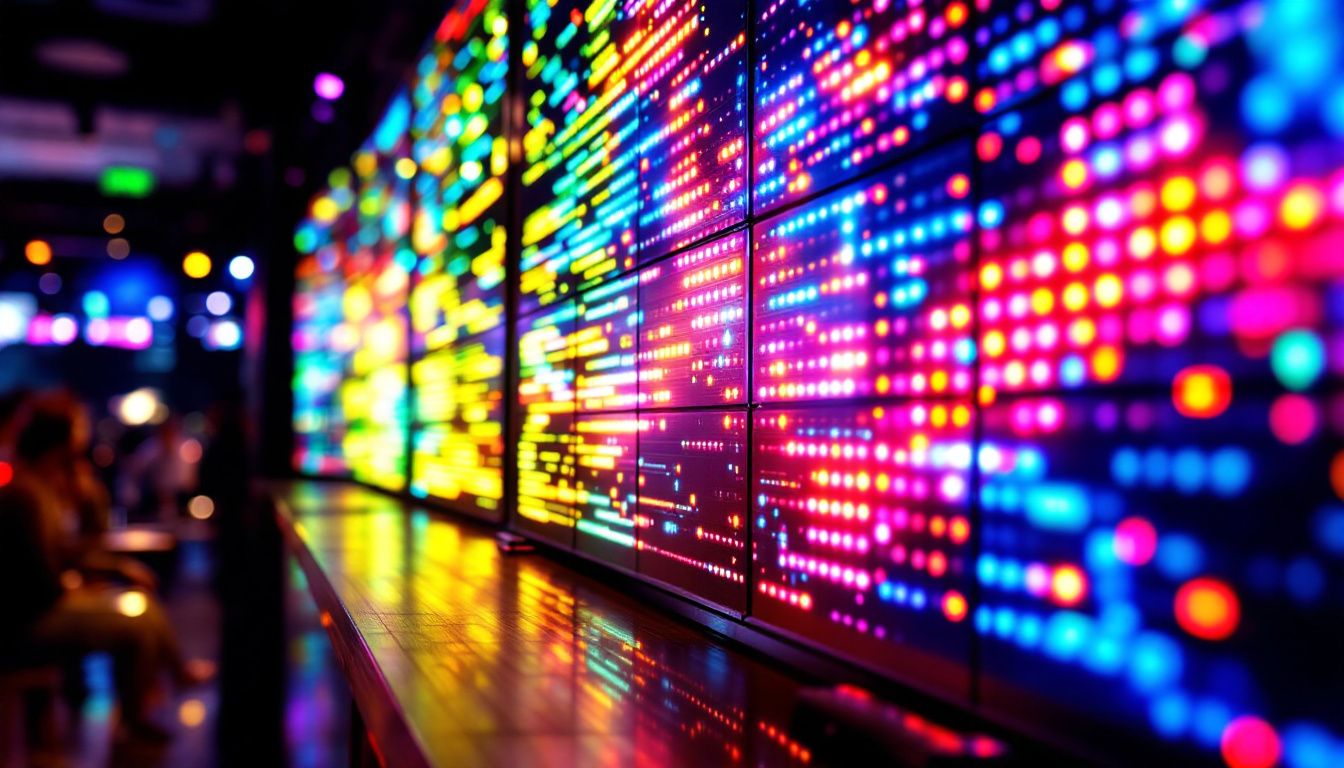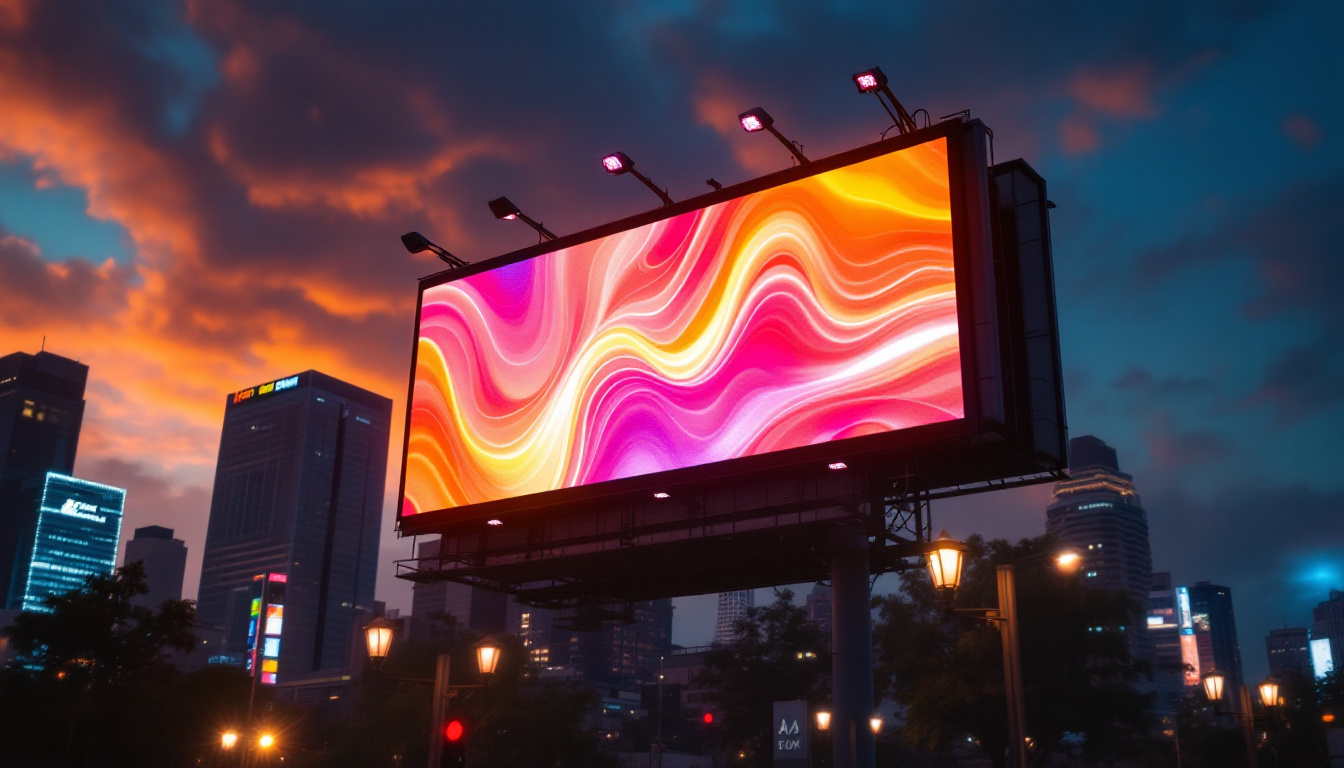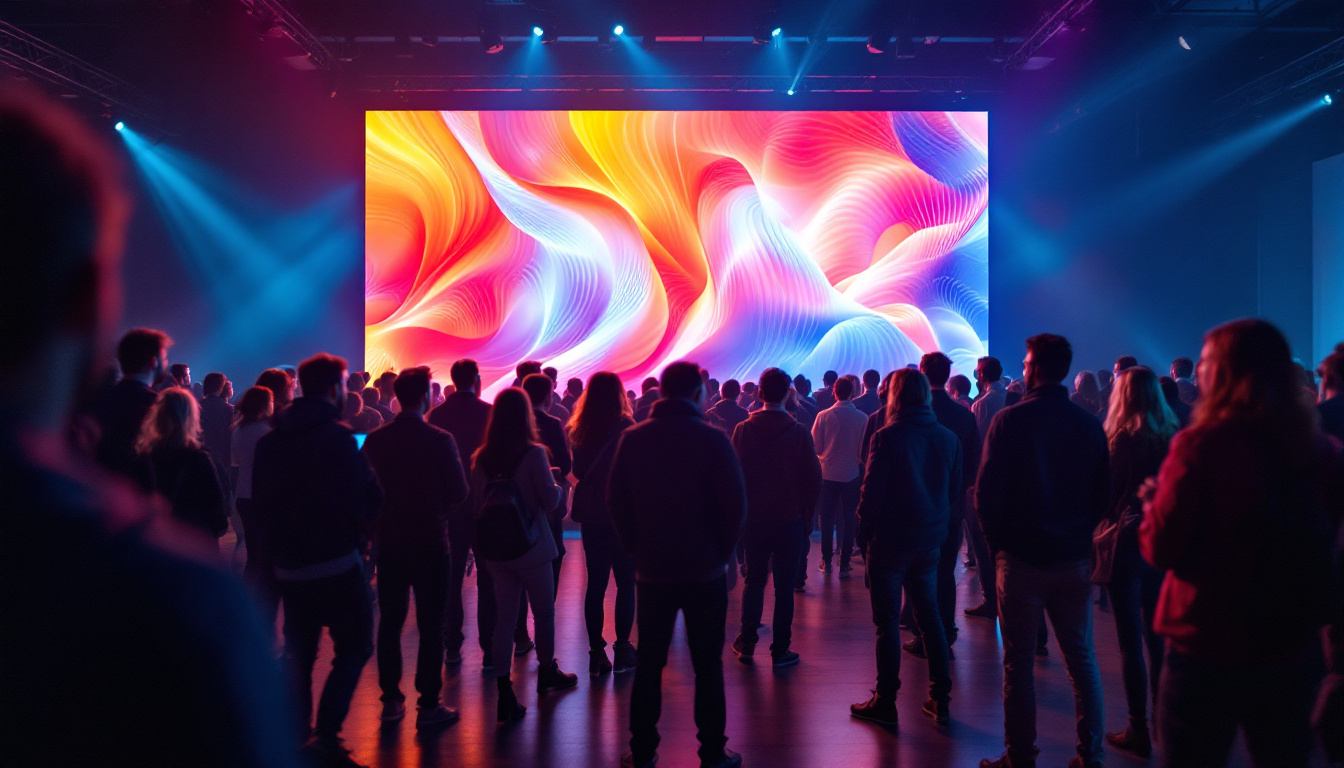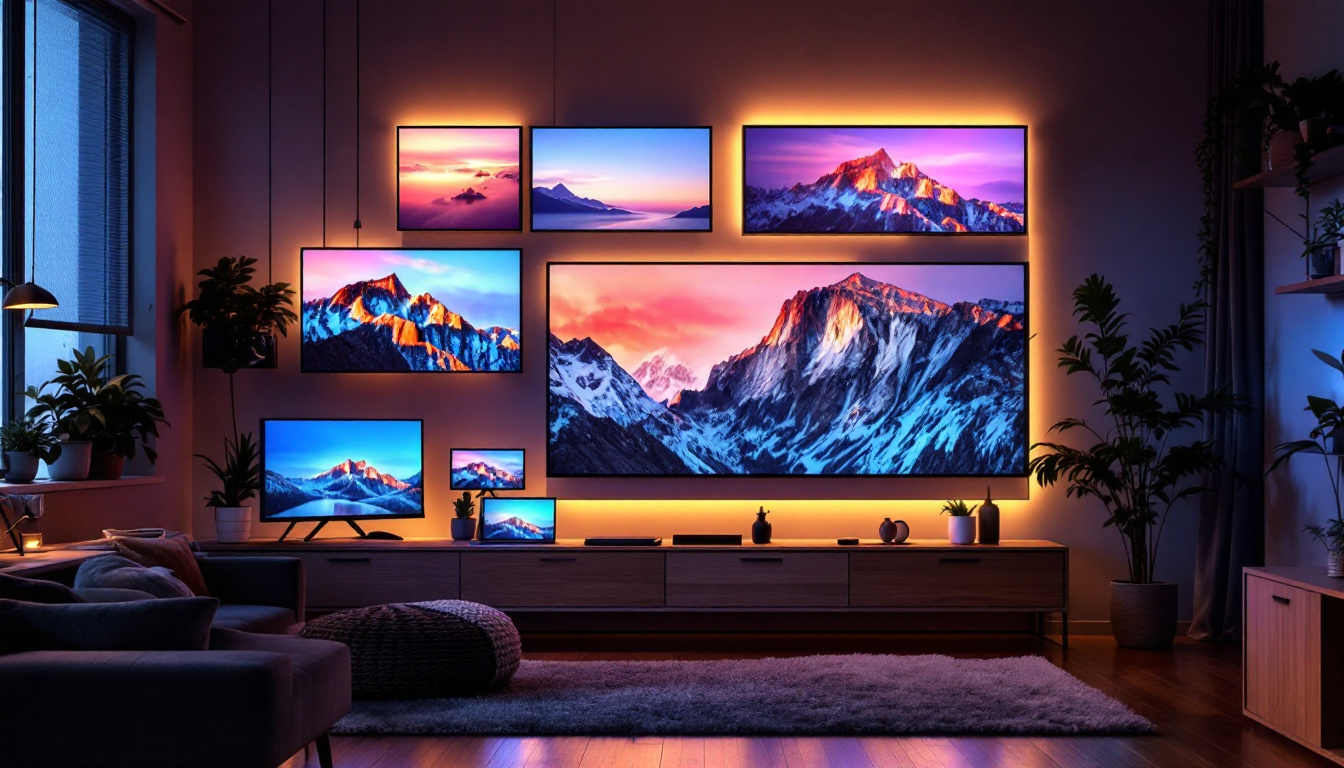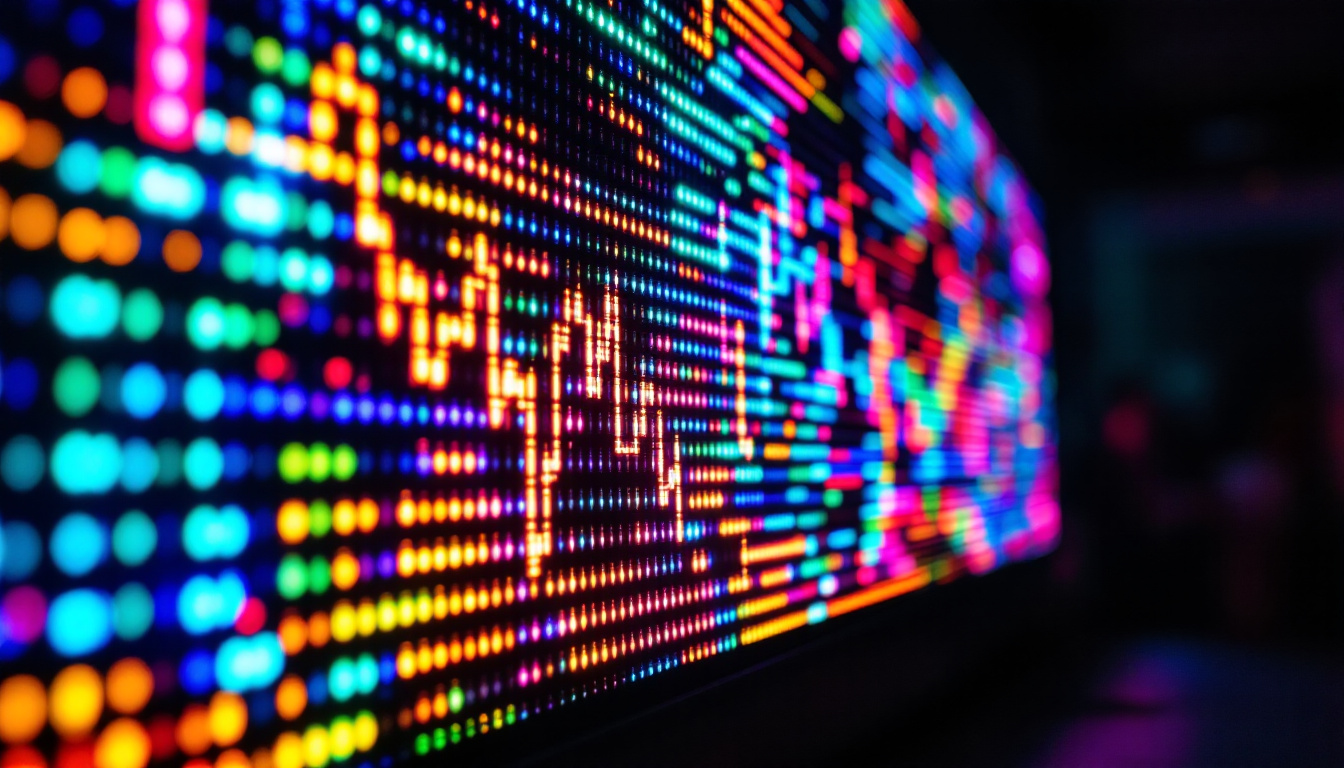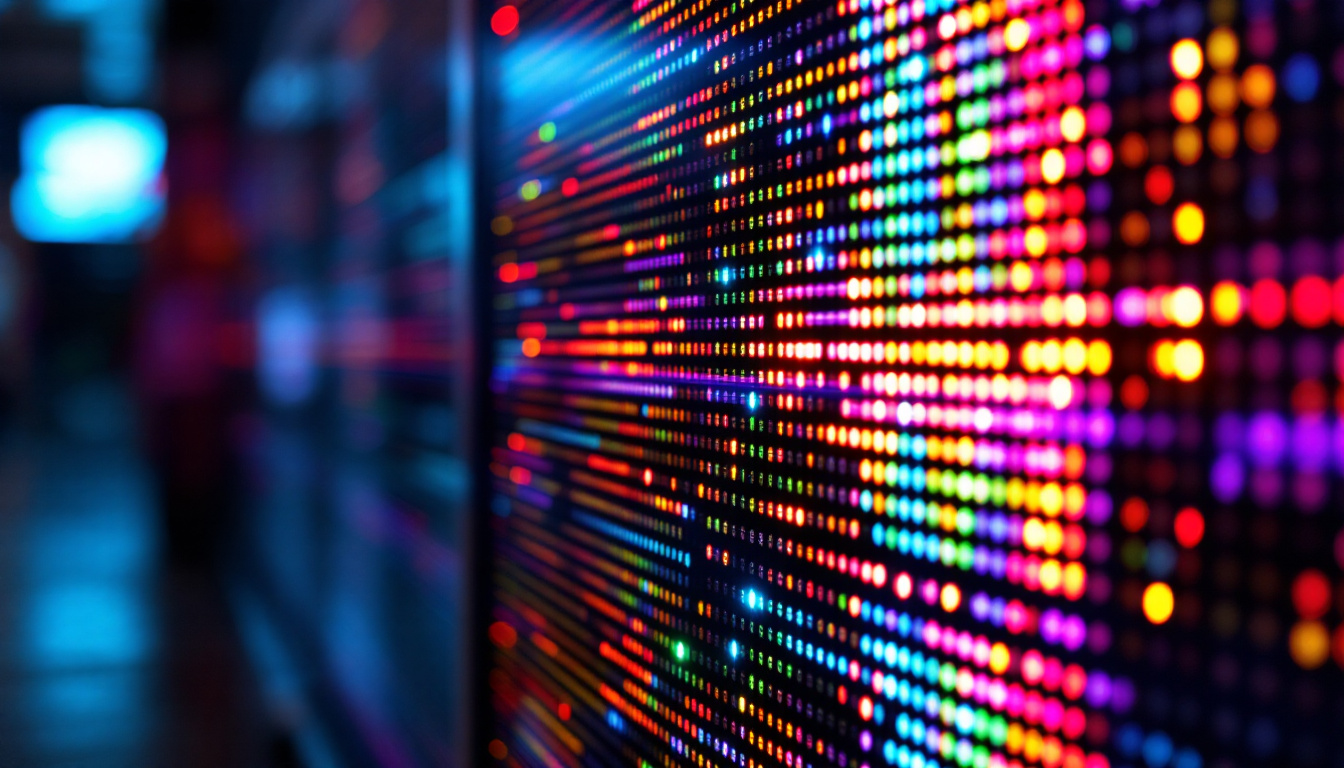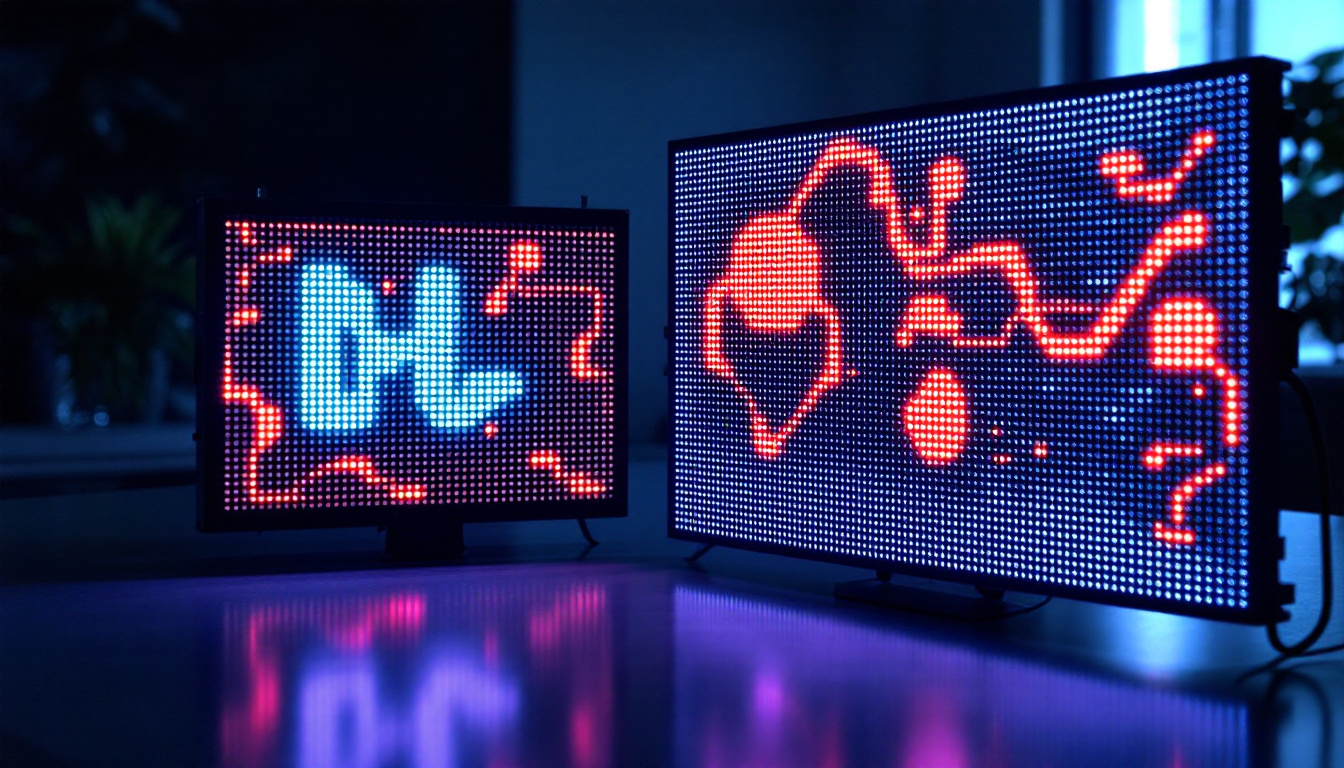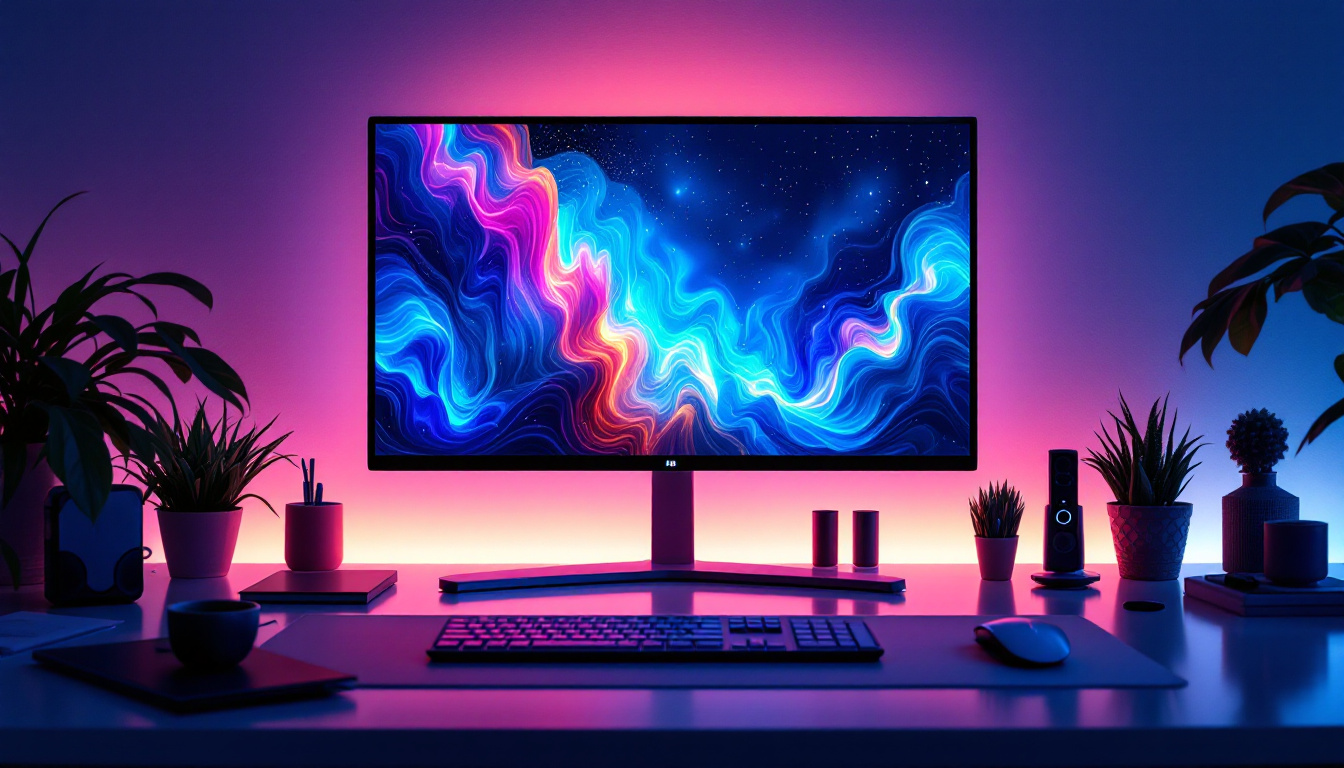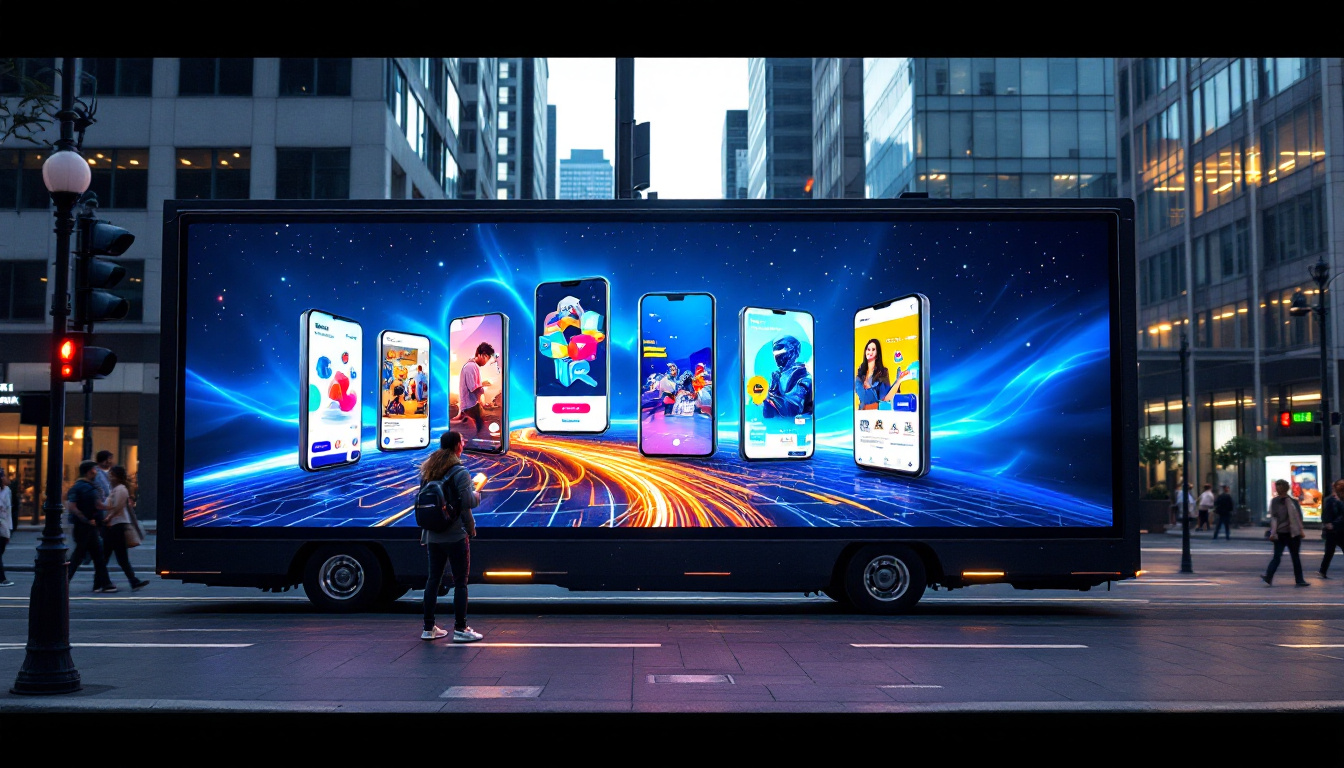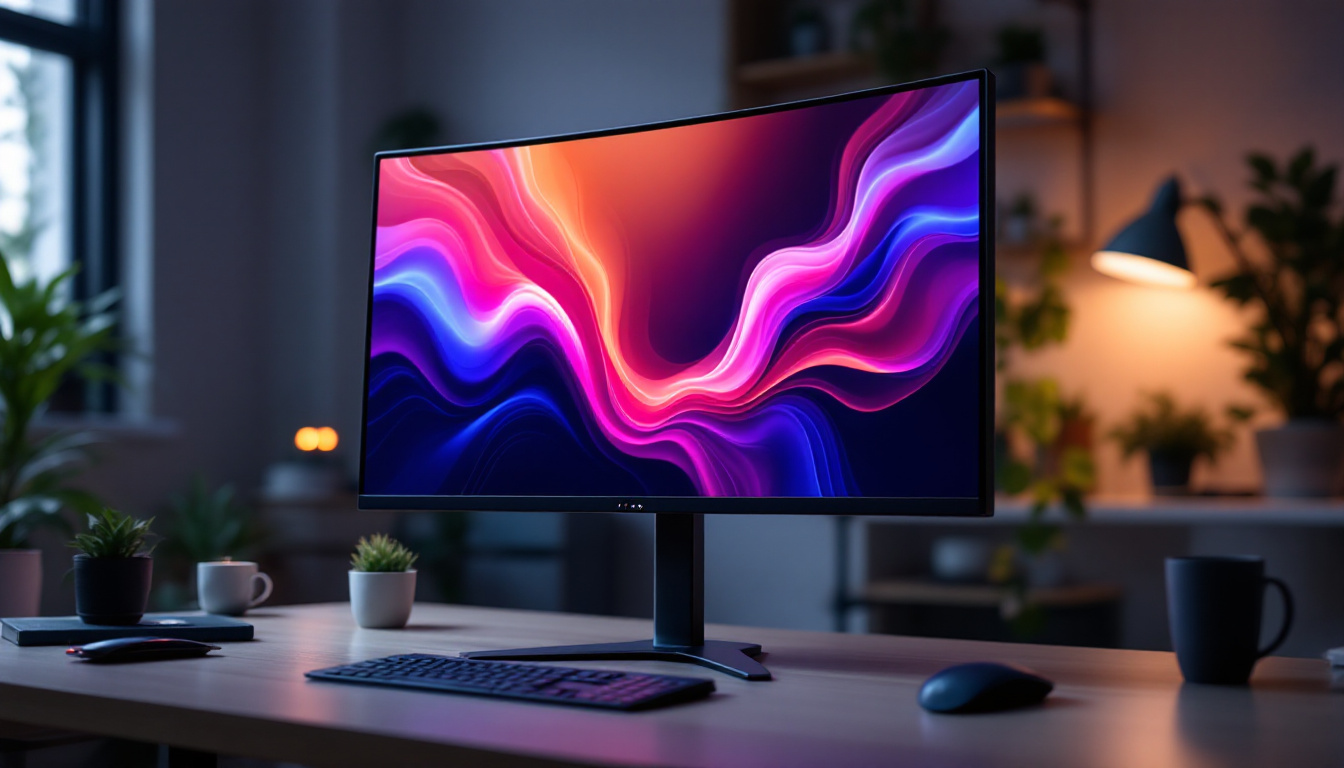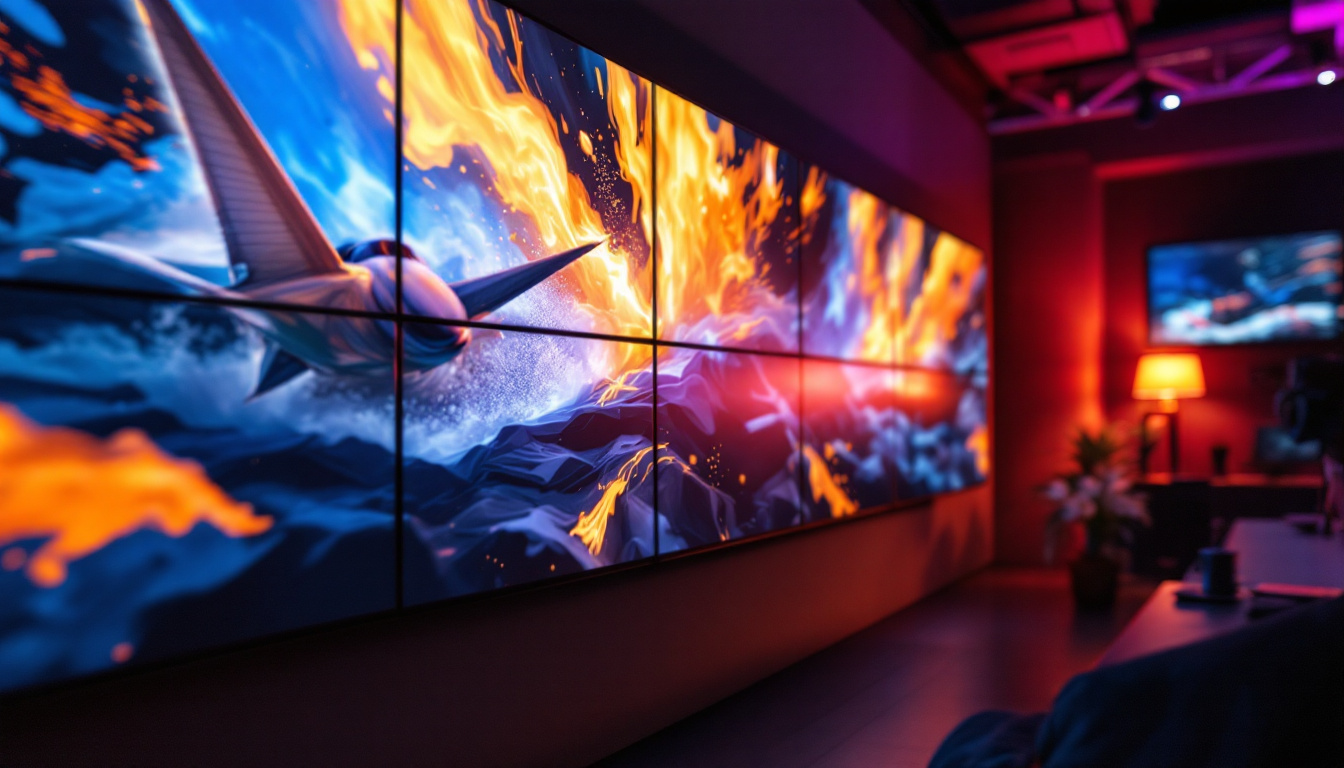In the ever-evolving world of display technology, the DisplayPort 1.4 (Dp 1.4) has emerged as a significant advancement, particularly for LED monitors. This article delves into the intricacies of Dp 1.4, its features, and how it enhances the visual experience for users across various applications.
Understanding DisplayPort 1.4
DisplayPort 1.4 is a digital display interface developed by the Video Electronics Standards Association (VESA). It is designed to connect a video source to a display device, such as a monitor or projector. As an evolution of its predecessors, Dp 1.4 offers several enhancements that cater to the growing demands for higher resolutions and refresh rates.
Key Features of Dp 1.4
One of the standout features of Dp 1.4 is its ability to support high resolutions and refresh rates. It can handle up to 8K resolution at 60Hz, which is a significant leap from earlier versions. This capability is crucial for professionals in graphic design, video editing, and gaming, where clarity and smooth motion are paramount.
Additionally, Dp 1.4 introduces Display Stream Compression (DSC), a visually lossless compression method that allows for higher bandwidth without sacrificing image quality. This feature enables users to enjoy stunning visuals even on monitors with limited bandwidth. DSC is particularly beneficial for 8K gaming and high-resolution video playback, where every pixel counts, ensuring that users experience the full depth and vibrancy of their content without noticeable degradation.
Compatibility and Connectivity
Another advantage of Dp 1.4 is its backward compatibility with earlier versions of DisplayPort. This means that users can connect devices using older DisplayPort standards without any issues. Furthermore, Dp 1.4 supports multiple display connections through Multi-Stream Transport (MST), allowing users to daisy-chain multiple monitors from a single output. This feature is especially useful for professionals who require extensive screen real estate for multitasking, as it simplifies cable management and reduces clutter on the desk.
Moreover, DisplayPort 1.4 incorporates support for High Dynamic Range (HDR) content, which enhances the viewing experience by providing a wider range of colors and improved contrast ratios. This is particularly advantageous for media creators and consumers alike, as HDR technology brings out the subtleties in shadows and highlights, making images appear more lifelike. As HDR content becomes more prevalent across various platforms, the capability of Dp 1.4 to deliver this enhanced visual experience positions it as a vital component in modern display technology.
LED Technology in Monitors
LED (Light Emitting Diode) technology has revolutionized the way displays are made, offering brighter, more vibrant colors and improved energy efficiency compared to traditional LCDs. LED monitors utilize a backlighting system that enhances the overall viewing experience, making them a popular choice for both casual users and professionals.
Benefits of LED Displays
One of the primary benefits of LED displays is their ability to produce a wider color gamut. This means that users can experience more accurate and vivid colors, which is especially important for tasks that require precise color reproduction, such as photo editing and graphic design.
Moreover, LED monitors tend to have faster response times compared to their LCD counterparts. This characteristic is particularly beneficial for gamers, as it reduces motion blur and ghosting during fast-paced action sequences. Gamers can enjoy a smoother visual experience, allowing them to react quickly in competitive environments where every millisecond counts. Additionally, many LED monitors come equipped with features like adaptive sync technology, which further enhances gameplay by eliminating screen tearing and stuttering.
Energy Efficiency and Longevity
LED technology is also known for its energy efficiency. LED monitors consume less power than traditional LCDs, leading to lower electricity bills and a reduced carbon footprint. Additionally, LED displays have a longer lifespan, which means users can enjoy their monitors for years without significant degradation in performance. This longevity is not just beneficial for consumers; it also contributes to a more sustainable environment by reducing electronic waste. As technology continues to advance, many manufacturers are also incorporating eco-friendly materials and processes in the production of LED monitors, further enhancing their appeal to environmentally conscious buyers.
Furthermore, the versatility of LED technology allows for various display types, including edge-lit and full-array backlighting options. Edge-lit LED monitors are typically thinner and lighter, making them ideal for those who prioritize space-saving designs, while full-array backlighting provides more uniform brightness and improved contrast ratios. This variety ensures that there is an LED monitor to suit every user’s needs, whether for professional use, gaming, or casual entertainment. As the market continues to evolve, innovations such as OLED technology are also emerging, promising even greater advancements in color accuracy and contrast, further pushing the boundaries of what LED technology can achieve in display solutions.
Combining Dp 1.4 with LED Technology
The combination of Dp 1.4 and LED technology creates a powerful synergy that enhances the overall display experience. With the ability to support high resolutions and refresh rates, Dp 1.4 maximizes the potential of LED displays, allowing users to fully appreciate the benefits of this advanced technology. This compatibility not only elevates the visual quality but also ensures that users can enjoy a seamless experience across various applications, from gaming to professional design work.
High Dynamic Range (HDR) Support
One of the most exciting features of Dp 1.4 is its support for High Dynamic Range (HDR). HDR technology allows for a greater range of brightness and contrast, resulting in images that are more lifelike and immersive. When paired with an LED monitor that supports HDR, users can experience stunning visuals that bring their content to life. This capability is particularly transformative in cinematic experiences, where the subtle nuances of shadow and light can be fully appreciated, making movies and shows more engaging than ever.
This feature is particularly beneficial for filmmakers and photographers who require accurate color representation and dynamic range in their work. The combination of Dp 1.4 and HDR-capable LED monitors ensures that creative professionals can produce and view their work with unparalleled clarity and detail. Additionally, HDR support extends beyond just visual fidelity; it enhances the storytelling aspect of media by allowing creators to convey emotions and atmospheres through rich, vibrant visuals that resonate with audiences on a deeper level.
Enhanced Gaming Experience
For gamers, the integration of Dp 1.4 with LED technology offers a significant advantage. The high refresh rates and low latency provided by Dp 1.4 enable smooth gameplay, while the vibrant colors and contrast levels of LED displays enhance the overall gaming experience. This combination allows gamers to immerse themselves in their virtual worlds like never before. The responsiveness of Dp 1.4 is crucial in competitive gaming scenarios, where every millisecond counts, and players can react swiftly to in-game events, giving them a competitive edge.
Moreover, the visual fidelity achieved through this synergy not only enhances gameplay but also elevates the overall aesthetic of gaming environments. With the ability to display intricate details and rich textures, players can explore expansive worlds with a sense of realism that was previously unattainable. This level of immersion can transform casual gaming into a captivating experience, making it easier for players to lose themselves in the narratives and challenges presented by their favorite titles. As game developers continue to push the boundaries of graphics and design, the combination of Dp 1.4 and LED technology will undoubtedly play a pivotal role in shaping the future of interactive entertainment.
Future of Display Technology
As technology continues to advance, the future of display technology looks promising. With the ongoing development of standards like Dp 2.0 and improvements in LED technology, users can expect even better performance and capabilities in their monitors. Innovations in refresh rates, response times, and color accuracy are set to redefine how we interact with digital content, making it more immersive than ever before.
Emerging Trends in Display Technology
One emerging trend is the increasing adoption of OLED (Organic Light Emitting Diode) technology. OLED displays offer even deeper blacks and more vibrant colors compared to traditional LED displays. The self-emissive nature of OLED means that each pixel can turn on and off independently, leading to exceptional contrast ratios that enhance the viewing experience. As OLED technology becomes more mainstream, it may present new opportunities for users seeking the best possible visual experience, particularly in fields such as gaming, film production, and graphic design, where color fidelity and detail are paramount.
Another trend is the rise of 8K displays. As content creation and consumption move towards higher resolutions, the demand for 8K monitors will likely increase. Dp 1.4’s ability to support 8K resolution positions it well for this future, ensuring that users can enjoy cutting-edge technology as it becomes available. Additionally, the growing popularity of virtual reality (VR) and augmented reality (AR) applications is pushing manufacturers to innovate further, leading to displays that not only boast higher resolutions but also improved field of view and refresh rates, which are crucial for a seamless experience in immersive environments.
Furthermore, advancements in display technology are also paving the way for flexible and foldable screens. These innovative designs can revolutionize how we use devices, allowing for larger displays that can be easily transported and adapted to various environments. Imagine a smartphone that unfolds into a tablet or a laptop with a screen that can bend around corners. This flexibility not only enhances portability but also opens new avenues for creative applications in both personal and professional settings.
Conclusion
In summary, DisplayPort 1.4 and LED technology together create a powerful combination that enhances the visual experience for a wide range of users. From professionals in creative fields to gamers seeking the ultimate performance, the benefits of this technology are clear. As display technology continues to evolve, users can look forward to even more exciting advancements in the years to come.
Understanding the capabilities of Dp 1.4 and the advantages of LED displays is essential for anyone looking to invest in a new monitor. With the right combination of technology, users can elevate their viewing experience to new heights, whether for work, play, or entertainment.
Discover LumenMatrix’s Advanced LED Display Solutions
Ready to experience the ultimate visual performance with the latest in LED display technology? Look no further than LumenMatrix, a pioneer in crafting immersive LED displays that bring your content to life. Whether you’re a professional seeking unmatched color accuracy or a gamer desiring high-impact visuals, our range of innovative products, from Indoor and Outdoor LED Wall Displays to Custom and All-in-One LED solutions, is designed to meet your every need. Elevate your visual communication and engage your audience like never before. Check out LumenMatrix LED Display Solutions today and step into the future of display technology.

